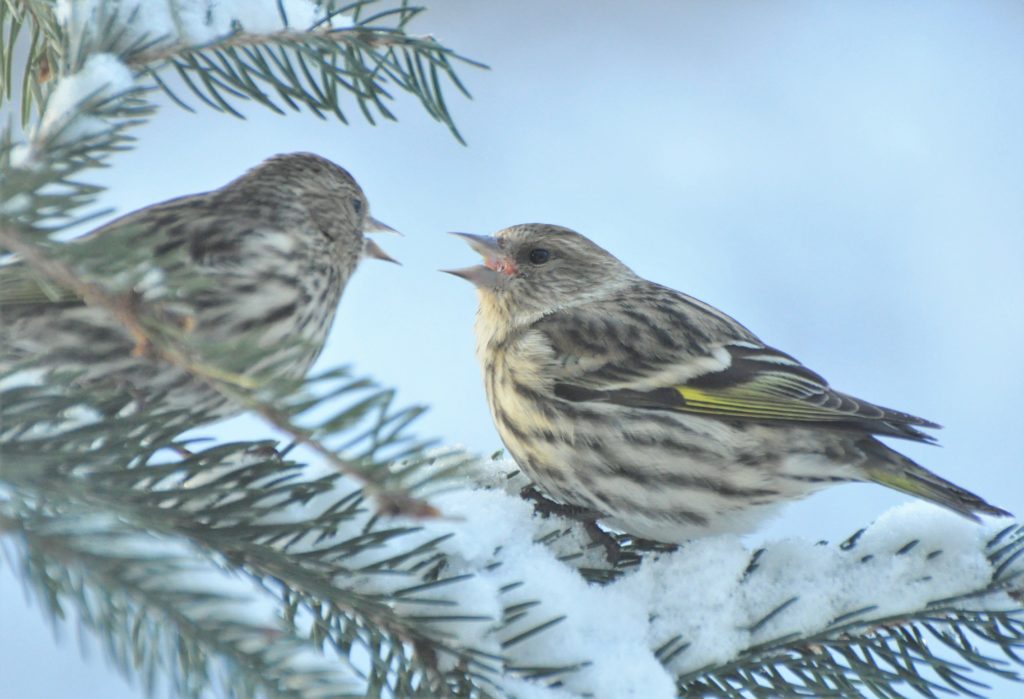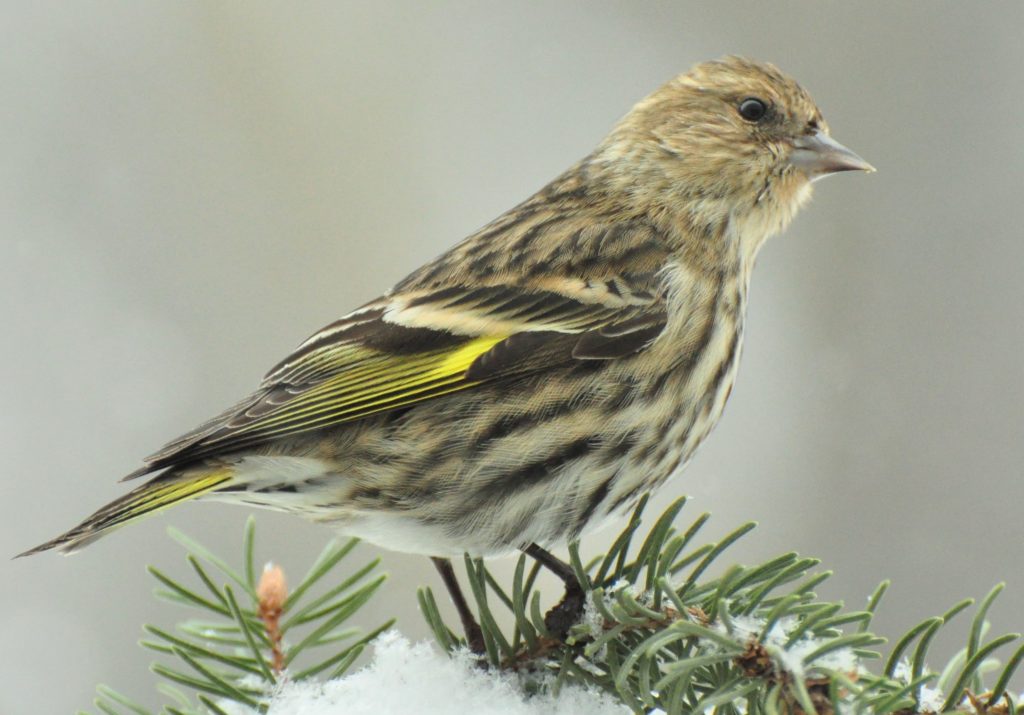Photography courtesy of Lowell Washburn, all rights reserved.
Considering the dramatic mix of weather we’ve endured during the past several weeks, I’m guessin’ that it would be hard for most of us to think of Northern Iowa as a Sunny South, winter destination. You know, the kind of place you’d go to escape unreasonably deep snow cover, extreme cold, polar wind chills and other winter unpleasantries.
But for an energetic little finch known as the pine siskin, that’s exactly what Iowa is – a virtual Banana Belt of luxurious winter warmth and comparatively easy livin’.

During most of the year, siskins are common residents of northern Canada’s pine forests where they subsist largely on the seeds of pine, spruce, and hemlock. In spite of their diminutive size, siskins are well adapted to surviving Canada’s harsh climate. During winters of abundance, the birds are reluctant to move. Some may refuse to migrate at all; easily withstanding temperatures plummeting to minus 50 and even sixty below zero. But when the food runs out, siskins are forced to head south; often staging their exodus in flocks numbering into the thousands.
In some years, southbound siskins stage dramatic invasions into parts of Iowa. More properly called irruptions because of their erratically unpredictable nature, the flights are hard to miss. Siskins are everywhere. By contrast, comparatively few, if any, siskins are seen during years when wandering populations encounter major food sources elsewhere.
Across northern Iowa, this year has been about as good as it gets for catching a glimpse of this remarkable feathered traveler. For most of the winter, pine siskins have been an extremely familiar sight across the region –common to the point that residents who had never seen a siskin until now, are enjoying daily visits to sunflower and thistle feeders.

During the month of February, pine siskins were among my most common backyard visitors, arriving in groups that drained seed feeders at an amazing rate. But the dozens coming to my yard were nothing when compared to the hundreds of siskins flocking to sites offering a greater number of feeders and a more complex variety of siskin-friendly treats. After refilling feeders at least once, and sometimes twice each day, one backyard enthusiast quipped that he may have to get refinanced if the cold weather and the bird numbers persisted. He was joking, of course, but I got the point.

As it turns out, I think my friend will be able to successfully avoid bird feeder bankruptcy. Our late winter days are getting longer, and siskin flocks have become increasingly restless. The time is at hand for birds to head back to Canadian nesting grounds. Numbers are thinning, and the siskins will soon be gone. Many flocks are already moving northward. And although I’ll miss their cheery daily visits, I’m also thankful for the lively entertainment they provided during what many folks are considering to have been a very cold and very long winter.


 Tom Cope
Tom Cope Sue Wilkinson
Sue Wilkinson Susan Judkins Josten
Susan Judkins Josten Rudi Roeslein
Rudi Roeslein Elyssa McFarland
Elyssa McFarland Mark Langgin
Mark Langgin Adam Janke
Adam Janke Joe Henry
Joe Henry Kristin Ashenbrenner
Kristin Ashenbrenner Joe Wilkinson
Joe Wilkinson Dr. Tammy Mildenstein
Dr. Tammy Mildenstein Sean McMahon
Sean McMahon